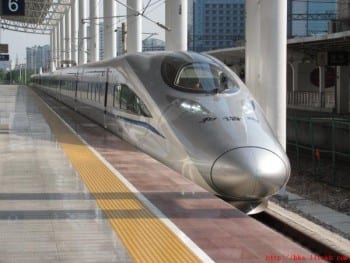Securing East Asia via Silk Road for science, technology and innovation
//
=By= Mathew Maavak

[dropcap]W[/dropcap]hile various Silk Roads have been highlighted by China for a “Greater Eurasia” economic integration, it is time to look beyond infrastructure, trade and economics. A lasting foundation can buttress the building blocks of tomorrow, especially in science, technology and innovation (STI).
With the world likely entering a prolonged period of economic slowdown, as well as increasing volatilities and uncertainties, Greater Eurasia –particularly its East Asian pivot –still remains a zone of relative stability. But such stability is contingent upon maintaining a level of economic autarchy, a robust and credible medium of transaction (i.e. Global Yuan) and qualitative leaps in hi-tech innovation and exports to offset the fallouts of a shrinking global market.
East Asia can no longer depend on extra-regional exports to fund its future engines of growth. The region must leverage on its internal strengths to maintain sustainable growth; to focus more on the regional rather than the global.
Increasing regional interconnectedness therefore necessitates information and R&D collaborations at an unprecedented pace in order to “colonize” the future.
China can lead the STI Silk Road
While China-initiated Silk Routes create and merge trading, financial and infrastructural nodes, there remains a critical need to build and synergize regional STI capacity. Trade without concomitant improvements in national STI capabilities may lead to rentier-yoked economies in relatively less developed regions of East Asia (e.g..in Bangladesh, Laos, Cambodia, Myanmar etc). An STI Silk Road levels the playing field by combining expertise, exchanging critical knowledge and exploring solutions to fill national developmental gaps.
Incredibly, such regional undertaking may not entail costly additional investments. Apart from already extant infrastructure, newly-laid fibre optic cables and transponders along many silk routes can be used to facilitate a regional, internet-facilitated STI superhighway.
The central nodes in each nation would ideally be its universities, science and technology parks, government agencies and indigenous NGOs which should generally be open to participation from all strata of society. An Open Source approach can be employed to gauge what the people want, need and aspire in terms of their immediate development. The central nodes in each nation may act as gatekeepers in this regard while a pan-regional cluster of nodal institutions may accelerate and amplify solutions for myriad developmental needs.
Through a process of give and take, citizen-level aspirations can be aligned to national and regional strategic needs. This way, citizens will not only take credit but will share due blame for consensus decisions made.
Unlike the developmental plans of the West to date, the people of East Asia will be the co-stakeholders and engineers of their future development. The sheer magnitude of contradictions and chaos roiling the West right now shows what happens when the “people factor” is reduced to a “paper tiger.” This elitist trap, marked by myriad fundamental and fractionating inequalities, is to be avoided at all costs.
Insulating the Future of the East
The STI Silk Road would arguably be the ultimate regional insulator and stabilizer.The China-led Belt and Road (B&R) initiatives can be aligned to synergize with national STI clusters. This knowledge-centric approach helps ensure that no particular East Asian nation will predominate at the deleterious expense of another. The STI Silk Road will leverage the particular strengths of constituent nations and institutions. The idea here is to ensure a sustainable regional equilibrium, with societies, nations and regions doing what they traditionally did best.
In terms of holistic development, it is ultimately the sciences that can bridge the rural-urban divide, the core and periphery, and the haves and have nots within the region. The ideas of children will be just as important as those of expert adults. This is an emerging axiom of Open Source Intelligence (OSINT), Open Innovation and Open Government paradigms.
Where high-speed broadband cables are missing, portable and rechargeable solar packs and satellite dishes may ensure adequate connectivity, bringing the region into a single knowledge matrix. The English language – once an artificial transplantation into the region – would now smooth over linguistic divides. Asia has always had the capacity to absorb the blows of colonial outsiders, learn from the bitter experience, and turn the tables to its advantage.
Securitizing Asia’s Future
Asian media leaders are already working on an “information Silk Road” in tandem with the main Silk Road initiatives to promote Asia as “a community of shared destiny.” Why not fortify that shared Asian destiny via an Open Source matrix for science-based development?
Such an interlinked cluster can be used for transboundary crisis management as well. For example, a plant pathologist may need inputs from lecturers or experts in various sub-domains to map out the impacts of a detected rice fungus half the world away. Since rice is the primary diet of East Asia, such a threat needs to be detected and prioritized through an OSINT-based early warning system. Experts from within the STI Silk Road may consult each other to draw up a contingency management plan i.e. what action plans need be formulated, and which Silk Road university or institution should lead this rapid response project. An emerging threat can be effectively neutralized this way.
An STI Silk Road therefore not only focuses on opportunities and development, it “securitizes” our future. Apart from hi-tech innovation, citizens in an economically depressed world can be empowered to exchange forms of regional jugaad (frugal) innovation via Open Source tools.
Inaction is not an option if the region is to avoid a repeat of the East Asian financial and currency crises of 1997.The coming set of crises are slated to be far worse than preceding ones in recent memory.
China can therefore help secure the future of East Asia by adding yet another golden strand into the Silk Road tapestry. It is time to create an STI Silk Road.
Mathew Maavak is a doctoral researcher in Security Foresight at University Teknologi Malays
Article: Republished with author’s permission from CCTV.
Featured Image: Chinarch380a at Changshou Station. (wodhks123 – open source)
Note to Commenters
Due to severe hacking attacks in the recent past that brought our site down for up to 11 days with considerable loss of circulation, we exercise extreme caution in the comments we publish, as the comment box has been one of the main arteries to inject malicious code. Because of that comments may not appear immediately, but rest assured that if you are a legitimate commenter your opinion will be published within 24 hours. If your comment fails to appear, and you wish to reach us directly, send us a mail at: editor@greanvillepost.com
We apologize for this inconvenience.
 Nauseated by the
Nauseated by the
vile corporate media?
Had enough of their lies, escapism,
omissions and relentless manipulation?
Send a donation to
The Greanville Post–or
But be sure to support YOUR media.
If you don’t, who will?